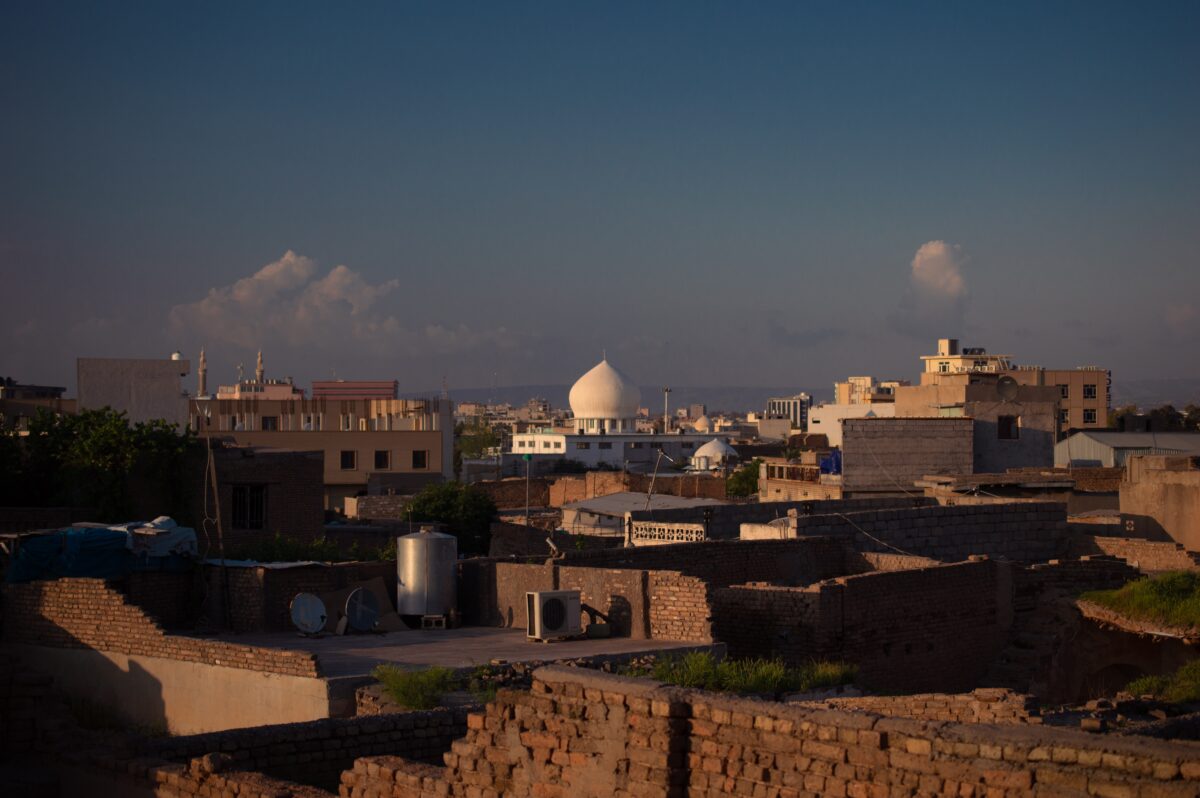Iraq’s water crisis has reached humanitarian and environmental calamity. Human conflict as a result of the Syrian Civil War has decimated ecosystems, natural capital, and water resources. Water is used as a weapon. As a result of climate change, irregular precipitation patterns and less rainfall are changing the livability of the region. Iraq is far behind its projected target for the UN 2030 Sustainable Development Goals (SDGs). The implications of climate degradation on water infrastructure has profound socioeconomic effects.
In Iraq, the consequences of climate change have begun to unfold. With increased moisture in the atmosphere as a result of melting glaciers and sea level rise, precipitation patterns are changing. Rather than patterned rainfall following seasonal changes, more sporadic and higher intensity storms have resulted in the destruction of crops and arable land through flooding, and in southern Iraq, drought and high temperatures have resulted in famine and the loss of key natural capital. From 2007 to 2009, Iraq and Syria endured their worst droughts since 1940, with precipitation levels dropping to 70 percent below annual averages. Desertification, salinization of topsoil, and the increasing amount of dust storms have profound implications for food and water security. Most immediately, these implications are affecting water security. Iraq’s water security is based on two declining rivers, the Tigris and Euphrates. These conditions have led to mass migrations from rural to urban areas, which puts incredible stress on food and water infrastructure, pollution management, and overall socioeconomic conditions. With weak federal infrastructure, the ability to combat these changing conditions is a challenge.
Greenhouse gas (GHG) emissions have also contributed to water insecurity. GHG emissions in Iraq increased 129% between 1991 and 2013. GHGs contribute to the global warming effect, which causes sea level rise, higher temperatures, and desertification, all of which negatively affect water infrastructure. Stable water infrastructure is necessary for agriculture, which is the second largest industry in the country, behind only oil exports. 25% of Iraq’s population relies on agriculture for their livelihood. The growing threat of increased GHG emissions at the price of water resources poses issues for socioeconomic conditions by increasing poverty, and by 2050, potentially creating uninhabitable urban areas.
Increases in GHG emissions have a strong effect on water security. The industry that causes the highest levels of GHG emissions is Iraq’s energy sector. The correlation of economic growth and GHG emissions is evident. In the same period of a 129% GHG increase, GDP grew 606%. To combat Iraq’s unsustainable growth, economic restructuring, tariffs on unsustainable manufacturers, and international aid are necessary, but Iraq’s political and socioeconomic infrastructure is experiencing civil war, terrorism, and humanitarian crisis. Human conflict detracts from climate mitigation and adaptation efforts. With a crumbling economy and the spillover of the Syrian Civil War, Iraq is unequipped to handle this calamity. Foreign involvement, along with non-governmental organizations such as Human Rights Watch (HRW), could help provide oversight and funding, work with community leaders, and reorient climate change mitigation efforts to take a holistic, socioeconomic approach.
Plenty of evidence suggests humanitarian conflict is a catalyst for climate change. ISIS’s expansion tactics came in the form of capturing important water infrastructures and gaining control over water resources. Attacking infrastructure, specifically large dams along the Tigris and Euphrates, gave ISIS the ability to manipulate the region’s most important resources. The effects on ecosystems are just as dramatic. Destruction of water, rerouting rivers, and other methods of obstructing ecosystems have extreme effects on biodiversity in the region.
Iraq has a long way to go to reach their goals of reducing GHG emissions 15% below business-as-usual emissions by 2035. Certain measures in recent years by the Iraqi government to combat climate change show promise for improvement. Iraq submitted an Intended Nationally Determined Contribution (INDC) ahead of the Paris Agreement, stating that there will be a reduction in GHG emissions. Of that reduction, 13% will be conditional and 87% will be met by an unconditional target. To reach this target, innovation in carbon storage techniques like forestation and replenishing carbon sinks, advances in sustainable agriculture through vertical farming and Genetically Modified Organism (GMO) use, and federal investment in social capital will help to create a green economy. If other Middle Eastern countries follow, the region will maintain its ability to sustain life. Otherwise, one of the largest human migrations in human history may soon unfold.
Sources
Basara is Thirsty: Iraq’s Failure to Manage the Water Crisis, 2019. Human Rights Watch. https://www.hrw.org/report/2019/07/22/basra-thirsty/iraqs-failure-manage-water-crisis#
Broom, Douglass, 2019, “How the Middle East is Suffering on the Front Lines of Climate Change,” World Economic Forum. https://www.weforum.org/agenda/2019/04/middle-east-front-lines-climate-change-mena/
Climate Change Risk Profile: Iraq, USAID. https://www.climatelinks.org/sites/default/files/asset/document/2017Mar3_GEMS_Climate%20Risk%20Profile_Iraq_FINAL.pdf
Greenhouse Gas Emissions: Iraq, 2017, USAID. https://www.climatelinks.org/sites/default/files/asset/document/2017_USAID_GEMS_GHG%20Emissions%20Factsheet_Iraq.pdf
Von Lossow, Tobias, 2020, “The Role of Water in the Syrian and Iraqi Civil Wars,” Clingendael Magazine. https://www.clingendael.org/publication/role-water-syrian-and-iraqi-civil-wars

